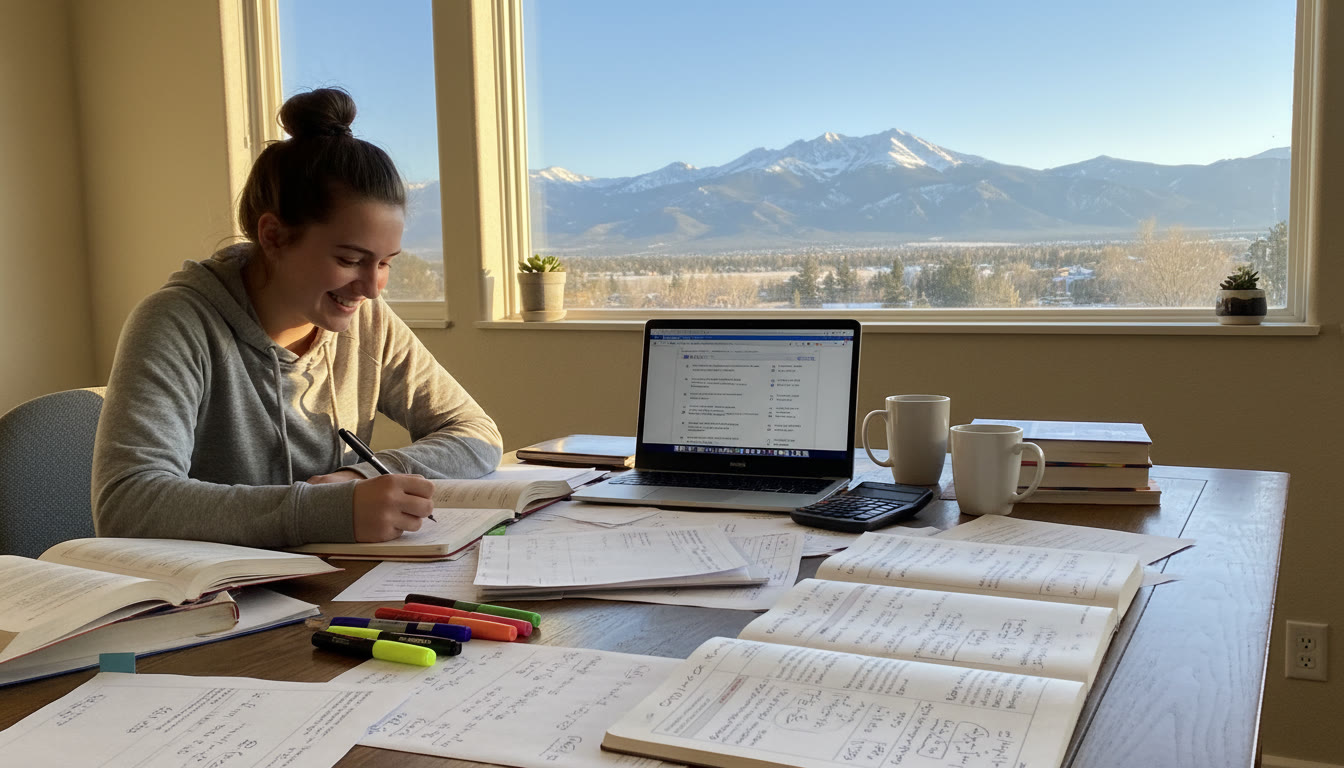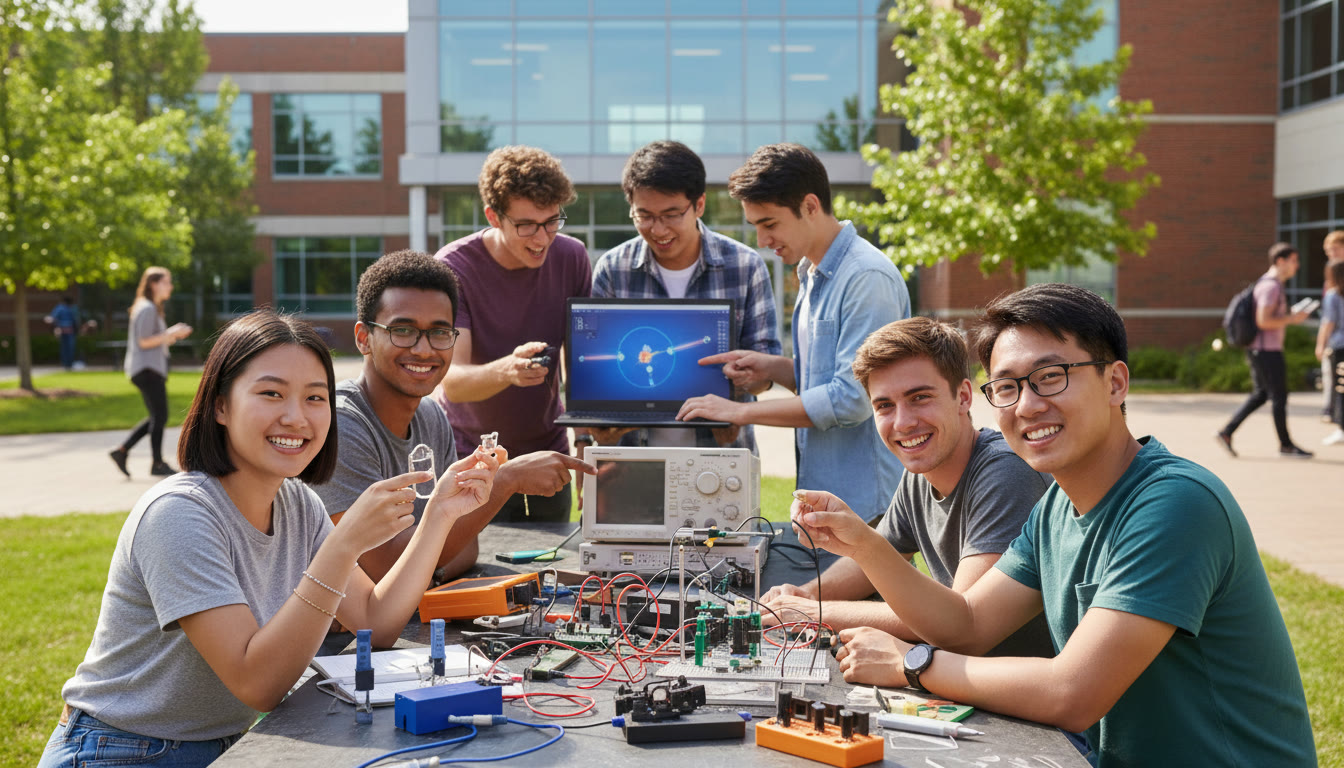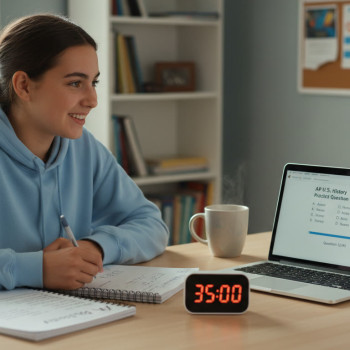Why AP Math and Physics Matter for Colorado School of Mines
If you’re aiming for the Colorado School of Mines — a school known for its rigorous engineering, applied science, and earth-science programs — your performance in AP Math and AP Physics can shape both your application and your early college experience. AP scores show admissions officers that you can handle college-level quantitative work. They can also translate into real curriculum benefits: advanced placement into higher-level courses, potential college credit, and more flexibility in scheduling once you arrive on campus.

That said, APs are only one piece of the admissions puzzle. Mines cares about demonstrated interest and strong quantitative readiness — but they also want students who are curious, resilient, and ready to contribute to a STEM community. Think of APs as both a signal (you can do the work) and a tool (they can give you credit or let you skip intro classes). The rest of this article helps you use that signal and tool deliberately.
Understanding AP Credit and Placement — Practical Reality
Many colleges, including prominent STEM schools, award college credit or advanced placement for qualifying AP scores. For students headed to Mines, that may mean:
- Skipping an introductory course and jumping into higher-level classes earlier.
- Using credit to free up time in your schedule for research, a double major, internships, or electives.
- Reducing tuition burden if you can graduate earlier (or take lighter semesters).
AP policies vary by institution and by department. Some departments accept AP Calculus BC for full credit toward the calculus sequence, while others accept only AP Calculus AB or give placement but not credit. Physics APs (1, 2, C Mechanics, C Electricity & Magnetism) are especially nuanced: many engineering programs value the C courses (with calculus) for direct placement into introductory engineering physics; algebra-based AP Physics might satisfy requirements for some programs but not others.
Which APs Should You Prioritize?
If Mines is your target and you’re planning a major in engineering, applied math, physics, or earth sciences, consider this prioritized list:
- AP Calculus BC — highest value: covers single-variable calculus through sequences and integrals; often accepted for multiple credit hours and can place you into multivariable calculus or differential equations sooner.
- AP Calculus AB — still important: solid for placement and credit depending on score and department policy.
- AP Physics C: Mechanics — essential for engineering-minded applicants; calculus-based and highly relevant.
- AP Physics C: Electricity and Magnetism — complements Mechanics; together the C exams mirror first-year engineering physics.
- AP Physics 1 or 2 — useful, especially if C courses aren’t available to you; shows conceptual understanding and lab experience.
- AP Statistics — increasingly useful across disciplines for data literacy and research.
Balancing ambition with practicality: take the best APs your school offers and that you can prepare for thoroughly. A 5 on a relevant AP exam is more persuasive than scattered 3s across many subjects.
Admissions Angle: How APs Appear on Your Application
Admissions committees read APs in context. Here’s how AP performance contributes to your profile:
- Transcript strength: AP courses demonstrate curricular rigor. A pattern of increasing challenge (e.g., precalc → BC → Physics C) tells a convincing story.
- Test scores: Strong AP exam scores reinforce your transcript. For Mines’ STEM programs, high scores in math/physics are a confidence-builder for evaluators.
- Interview and essays: Use AP projects, labs, or independent study as concrete examples of curiosity and problem-solving.
Tip: If you had a shaky start in freshman year but show clear upward trajectory into AP math and science, explain briefly in an application essay or counselor note how that growth reflects your maturity and focus.
Study Strategy: A Year-by-Year AP Preparation Plan
Below is a sample two-year roadmap (junior and senior years) that balances exam prep, coursework, and college-application readiness. Adjust timing to your school’s offerings and personal pace.
| Timing | Focus | Suggested Actions |
|---|---|---|
| Junior Year Fall | Coursework and baseline skills | Enroll in AP Calculus (AB/BC) or pre-AP calc; start AP Physics C if available; build a weekly problem routine; join math/physics club or project team. |
| Junior Year Spring | Deepen content & practice | Complete AP courses; begin AP-style practice exams; identify weak areas (vectors, integration techniques, circuits) and target them. |
| Summer Between Jr & Sr | Focused review and enrichment | Work through an AP prep book, take online modules, or complete a project (e.g., Arduino, math modeling) to show initiative; optionally start AP Physics C E&M prep if you took Mechanics earlier. |
| Senior Year Fall | Finalize application narrative | Take mock AP exams under timed conditions; synthesize lab experiences into essays and supplements; send one free AP score send when helpful. |
| Senior Year Spring | Exam execution | Take AP exams; after scores, send official reports to colleges for credit/placement consideration. |
Active Study Tactics That Actually Work
Beyond passive reading, here are high-impact tactics for mastering AP Calculus and AP Physics:
- Problem-spaced practice: Solve varied problems daily. Rotate topics so you revisit tough concepts at intervals.
- Teach to learn: Explain problems to a study partner or record yourself teaching a topic — teaching reveals gaps in understanding.
- Simulate the exam: Practice full-length AP exams under timed, exam-like conditions. Learn pacing — many students know the material but run out of time.
- Focus on core representations: For physics, connect equations to free-body diagrams, graphs, and physical intuition. For calculus, link algebraic technique to geometric meaning.
- Lab and lab-report skills: Physics C includes labs; practice clear lab write-ups — they reinforce experimental reasoning and are useful in essays or research experiences.
Weekly Practice Template
Here’s a simple weekly plan that balances practice with review without burning you out.
- Monday: 60 minutes — Concept review and 10 targeted problems.
- Tuesday: 45 minutes — AP-style multiple-choice set under time pressure.
- Wednesday: 60 minutes — Free-response practice or lab data analysis.
- Thursday: 30 minutes — Mistake journal: revisit and re-solve incorrect problems.
- Friday: 60 minutes — Mixed problem set + short conceptual flashcards review.
- Weekend: 90–120 minutes — One long practice section or full practice exam every 2–3 weeks.
How to Translate AP Success into College Advantage at Mines
Once you receive AP scores, do three things:
- Confirm Mines’ department-specific policies: Which AP scores give credit? Which provide placement only? Which translate to major-specific prerequisites?
- Decide how to use any earned credit: Would skipping intro classes let you take advanced electives, undergraduate research, or internships earlier?
- Plan your path: If you get partial credit, map how remaining courses fit into your major timeline to avoid surprises.
Even if AP credit isn’t generous, placement can still be invaluable. Placing out of large required lecture courses can free time for hands-on learning — research projects, fieldwork, or co-ops that Mines students often pursue.
Common Pitfalls and How to Avoid Them
High-achieving students sometimes fall into familiar traps. Watch out for these:
- Overloading on exams: Taking every available AP isn’t always better. Depth in core STEM APs beats shallow breadth.
- Failing to verify credit policy: Don’t assume all AP scores map the same way. Check policies early, so you know if a 4 or 5 is worth pursuing for credit.
- Ignoring lab skills: Physics (and some math applications) reward experimental thinking. Include lab work or hands-on projects on your transcript or in essays.
- Poor pacing on test day: Time management is half the battle. Practice full sections with a timer to build stamina.
Sample Study Calendar for the Final 12 Weeks Before AP Exams
Use this focused sprint if your exams are approaching. It’s intentionally intense but manageable if you’ve kept up with coursework.
| Week | Primary Goal | Key Activities |
|---|---|---|
| Weeks 12–10 | Solidify core concepts | Daily 60–90 minute study blocks; topic outlines; finish content review for weakest unit. |
| Weeks 9–6 | Mixed practice and technique | Alternate MCQ sets and free-response practice; timed sections; targeted feedback sessions. |
| Weeks 5–3 | Full exam simulations | Take at least two full-length exams under timed conditions; analyze mistakes in a journal. |
| Weeks 2–1 | Light review and confidence-building | Short concept review, light practice, rest well before exam day; prepare test logistics and mindset routines. |
Real-World Context: What Mines Looks For Beyond Scores
Mines is a technically focused school, but admissions readers still look for rounded students: demonstrated curiosity, teamwork, and applied problem-solving. Showcase projects — robotics, a research project, fieldwork, or internships — connected to your AP work. For example:
- A student who took AP Calculus BC and then completed a math modeling project shows both technical ability and applied thinking.
- A student who paired AP Physics C with an independent electronics project (sensors, data logging) demonstrates laboratory skill and initiative.
Your essays and activities list should make those connections explicit. Admissions reviewers aren’t only counting tests; they want to see how you’ll thrive in Mines’ collaborative, project-driven environment.
How Personalized Tutoring Can Amplify Your Results
Targeted, one-on-one guidance moves the needle more than extra hours alone. Personalized tutors help you identify specific weaknesses, correct misconceptions quickly, and build an exam-ready mindset.
For students balancing AP study with extracurriculars and applications, tailored tutoring (for example, Sparkl’s personalized tutoring) can provide structured weekly plans, expert tutors who know AP rubrics, and AI-driven insights to focus practice on weak subtopics. That combination of human coaching and smart diagnostics shortens the path to consistent 4s and 5s.
What To Do After You Get Your AP Scores
Once scores are released, follow these steps:
- Request official score reports to be sent to Colorado School of Mines if you want them considered for credit or placement.
- Consult Mines’ registrar or departmental advising for exact credit/placement translation — policies may refer to specific exam scores and departmental thresholds.
- Decide whether to use the credit now or save it — sometimes students opt to take the intro course anyway for a stronger foundation or GPA strategy.
Wrapping Up: A Practical Checklist for Students and Parents
Before you close your study plan and breathe (for a minute), run through this checklist:
- Have you prioritized AP Calculus BC and AP Physics C if your major is engineering or applied science?
- Did you simulate timed exams and practice free-response questions multiple times?
- Have you verified Mines’ AP credit and placement policies with the department or admissions office?
- Can you point to at least one project that ties AP learning to a real-world application (lab work, research, or a personal build)?
- Have you considered targeted tutoring for the final months to refine exam technique and pacing?
Final Thoughts
Pursuing Mines is ambitious and entirely within reach with the right preparation. AP Math and Physics are powerful tools: they prove readiness, can change your first-year experience, and give you more freedom to dive into research and hands-on learning. But remember — test scores alone don’t define you. Pair strong AP results with thoughtful projects, clear essays, and a demonstrated love of engineering or science.
If you want a practical next step: make a simple 12-week plan, pick one measurable weekly goal, and consider one-on-one tutoring to accelerate progress in the final months. With consistent effort, strong strategy, and the right support, you’ll walk into Mines—or anywhere you aim—with confidence and momentum.

Best of luck — stay curious, practice deliberately, and savor the process of learning. The payoff is not just college credit, but the confidence and skills that will carry you through an exciting STEM career.


















No Comments
Leave a comment Cancel